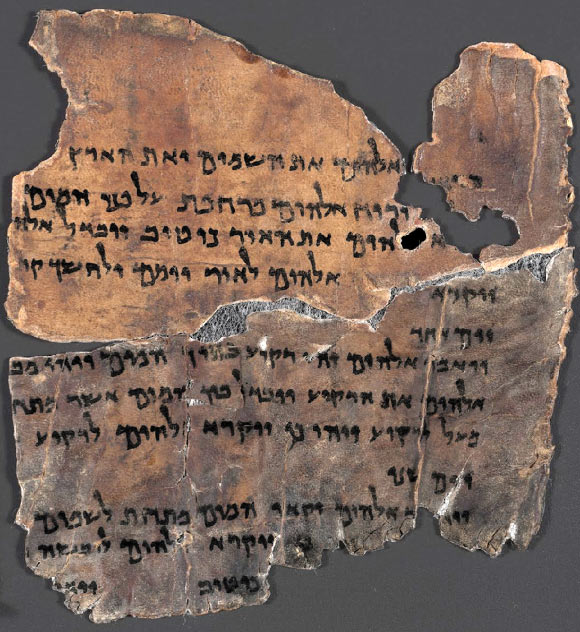Determining by means of paleography the chronology of ancient handwritten manuscripts such as the Dead Sea Scrolls is essential for reconstructing the evolution of ideas, but there is an almost complete lack of date-bearing manuscripts. To overcome this problem, an international team of scientists created an AI-based date-prediction model — named Enoch, after the Biblical figure — trained on the basis of 24 dated scroll samples.
Dead Sea Scroll 4Q7, a fragment of the Book of Genesis found in Wadi Qumran Cave 4. Image credit: KetefHinnomFan.
While some ancient manuscripts have dates written on them, giving archaeologists a precise understanding of when they were created, many manuscripts have no date information.
By studying the evolution of handwriting styles over time, researchers can sometimes determine the approximate age of some undated manuscripts by evaluating their handwriting.
But to use this method, researchers need enough manuscripts with accurate dates from that period of history to create a reliable timeline of handwriting styles.
In a new study, Dr. Mladen Popović from the University of Groningen and his colleagues evaluated the age of historic manuscripts from various sites in modern-day Israel and the West Bank through radiocarbon dating, and then used machine learning to study the handwriting styles of each document.
By pairing those two datasets together, they created the Enoch program that uses the handwriting style of other manuscripts from the region to objectively determine an approximate age range.
To test the program, ancient handwriting experts evaluated Enoch’s age estimates for 135 of the Dead Sea Scrolls.
The experts determined that approximately 79% of the AI’s estimates were realistic, with the remaining 21% determined to be either too old, too young, or indecisive.
Enoch has already helped the research team discover new things about these ancient manuscripts.
For example, both Enoch and radiocarbon dating methods estimated older ages for many of the Dead Sea Scrolls than did traditional handwriting analysis.
“Although more data and further research could help understand the timeline, our work provides new insights into when these documents might have been created,” the researchers said.
“With the Enoch tool we have opened a new door into the ancient world, like a time machine, that allows us to study the hands that wrote the Bible, especially now that we have established, for the first time, that two Biblical scroll fragments come from the time of their presumed authors.”
“It is very exciting to set a significant step into solving the dating problem of the Dead Sea Scrolls and also creating a new tool that could be used to study other partially dated manuscript collections from history.”
“This would not have been possible without the collaboration between so many different scientific disciplines, a real team effort”
A paper describing this research was published in the journal PLoS ONE.
_____
M. Popović et al. 2025. Dating ancient manuscripts using radiocarbon and AI-based writing style analysis. PLoS One 20 (6): e0323185; doi: 10.1371/journal.pone.0323185

























